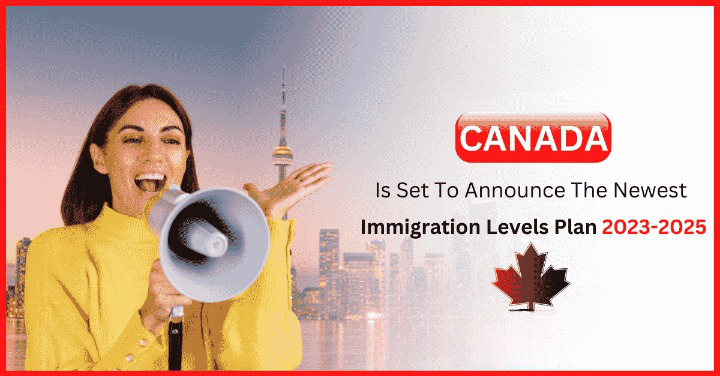IRCC publishes its annual Immigration Levels Plan (Immigration, Refugees, and Citizenship Canada). It helps guide the number of foreign nationals who will be able to enter Canada each year. It breaks down immigration into three categories over the following years; cost-effective, familial, and humanitarian. We will visualize the forecasts for 2023, 2024, and 2025 this year. Explore which immigration consultants in Abu Dhabi are the most highly recommended.
The Canadian government must make an annual announcement under the Immigration and Refugee Protection Act (or IRPA for short), which is the country’s primary immigration statute, by November 1. It is the second Immigration Levels Plan to be released that year; the first came in February following the September 20, 2021, federal election. Consult the top visa consultants in the UAE.
Why do we have TWO Announcements this year?
Although generally released by November 1 each year, the 2022-2024 plan was not made public until February. Parliament did not resume its work until November 22, 2021, following the election, and then it only met for 19 days before adjourning for the holidays. In such cases, the proposal must be revealed within a month of Parliament’s reconvening, per IRPA. On this occasion, the new session of Parliament began in the middle of January.
The Canadian government will release the most current Immigration Levels Plan on time now that Parliament has begun sitting. Yellow box immigration Consultants boasts an outstanding team of the best immigration consultants in Abu Dhabi.
Strategy for the Current Level of Immigration
Four hundred thirty-one thousand six hundred forty-five new permanent residents will enter Canada through various immigration channels in 2022, as stated in the country’s Immigration Levels Plan for 2022–2024. This goal aims to increase the number of permanent residents by 451,000 by 2024.
More than 300,000 new permanent residents have entered Canada so far in 2022. The vast majority of these people are participating in lower-income housing programs. In 2022, we want to bring in 241,850 immigrants, with an economic goal of 241,850. In addition, the plan for 2022 seeks to admit 105,000 immigrants in the family class and 8,250 refugees and humanitarians.
A revised Immigration Levels Plan for 2023-2025 will change these goals. They will no longer serve as a benchmark for the Immigration, Refugees, and Citizenship Canada (IRCC).
What Can We Expect?
New increases are routine under the Immigration Levels Plan, which is now at record highs. For instance, in 2006, the goal for 2016 was a mere 250,000 new arrivals. The IRCC recorded the highest number of permanent residents ever, thanks to the pandemic, with over 405,000.
To ensure that the allocation of permanent resident quotas across all visa categories and visa streams is equitable, IRCC collaborates with various government agencies and interested parties to develop an Immigration Levels Plan.
Several provincial immigration ministers have challenged the current plan for failing to provide enough seats for PNPs, so immigration minister Sean Fraser said he will discuss the labor market requirements of the provinces in an interview with CIC News (Provincial Nomination Programs). Their goal is to boost Canada’s labor force and address its shortage of workers by bringing in qualified immigrants. The minister has also stated that he expects annual objectives to rise to 500,000 new permanent residents. But he did not provide a timeframe for it.
“It wasn’t important to me to clock it,” he stated. We can accomplish it, I am confident. Through the current route, our population is increasing by more than 1% annually. In other words, that trend will continue. I cannot say for sure when we will hit 500,000 annual immigration. Individual neighborhoods will have their requirements.
Data from Immigration, Refugees, and Citizenship Canada shows that as of August 31, 513-923 people were waiting for their permanent residency applications to be processed. IRCC made public its plans to increase customer services and decrease processing times by investing in new technology, expanding its workforce by over a thousand people, and switching to an entirely digital application procedure.
For What Reason Is Canada Increasing Its Immigration?
To fulfill its duty of welcoming and supporting immigrants for economic development, family reunification, and humanitarian aid, IRCC develops the Immigration Levels Plan in conjunction with a wide range of government ministries.
Canada’s economy relies heavily on the contributions of its newcomers, who do so through their work and income taxes. The healthcare system, public schooling, public works, pensions, and other social programs rely on tax revenue. Canadians born between 1946 and the early 1960s, known as “baby boomers,” are reaching retirement age. Increasing the number of immigrants will help the country keep its high quality of living.
The leading immigration consultancy in the UAE is Yellow Box Immigration. ”Our Canada immigration consultancy can help you.

